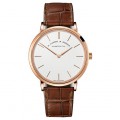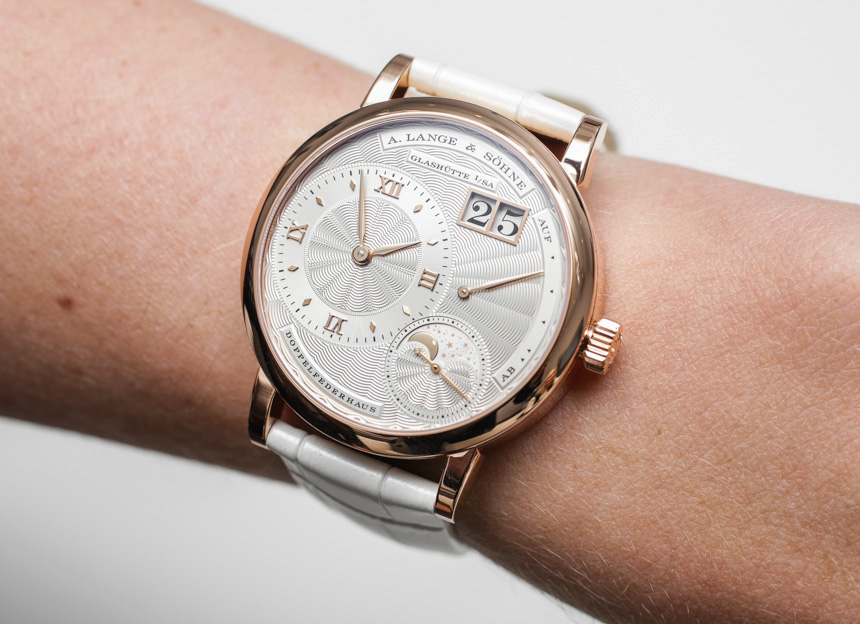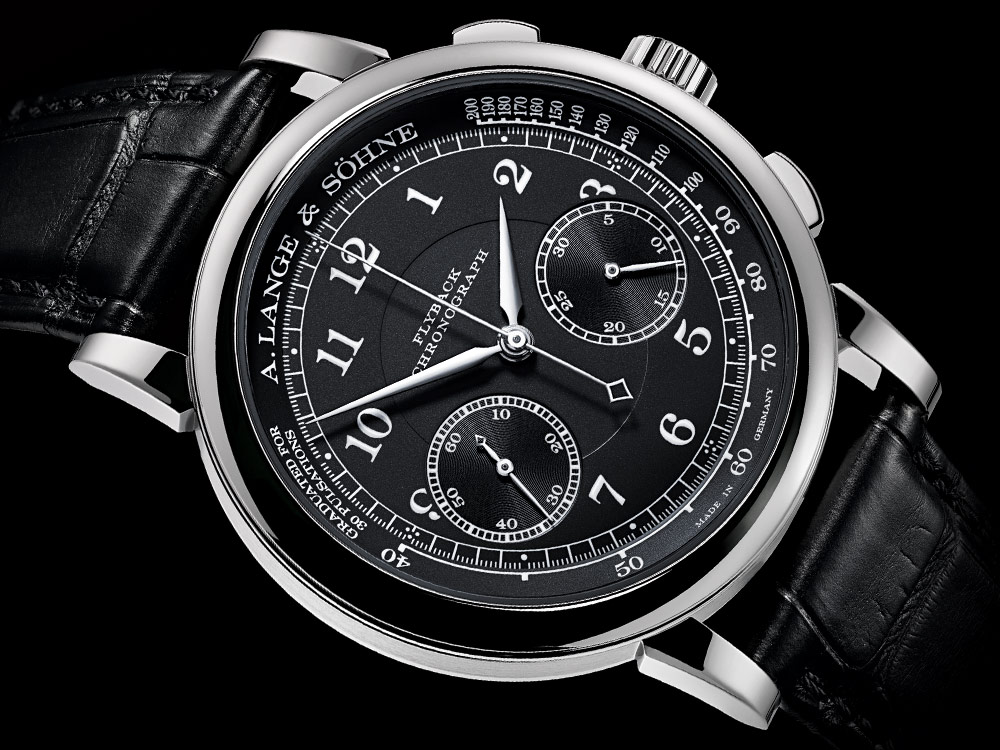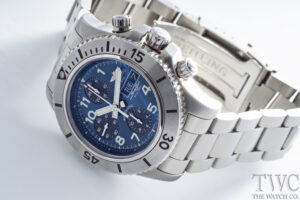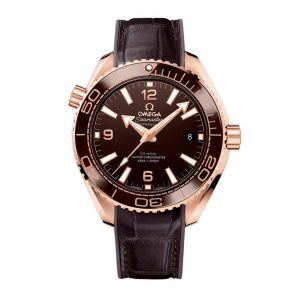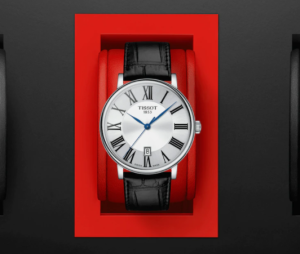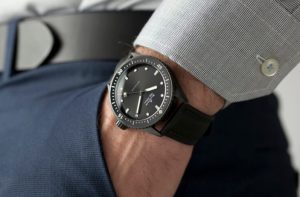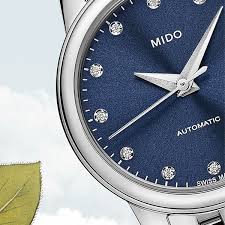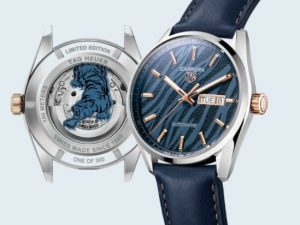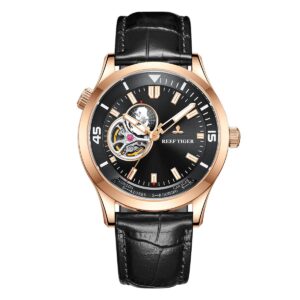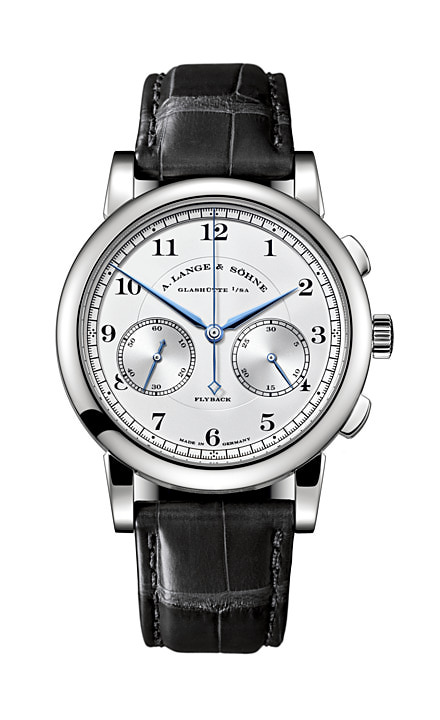
A. Lange & Söhne is one of the biggest surprises to many watch enthusiasts. In 1999, A. Lange & Söhne Datograph was one of the most popular watches in the world, and which was not only an in-house chronograph, but an in-house flyback chronograph – it had a very elaborately constructed and sophisticated big date display as well.
The Datograph is still with us today, drawing a lot of praise for the general quality of construction and finish, and the really incredible beauty of the movement. One of the criticisms levied against it, however, was on account of its thickness, especially in comparison with the Patek 5170G. It’s certainly true that the Dato is thicker, but quite a few readers were quick to notice and point out that while the Dato and 5170G occupy roughly comparable price points, the Datograph is really something of a different animal; in addition to being a flyback chronograph, it also has a big date display and a power reserve complication. The objection, therefore, was that in comparing the Datograph to the Patek 5170G, we were somewhat comparing apples and oranges to the detriment of A. Lange & Söhne – and ignoring a much more appropriate watch for the purposes of comparison, which is the 1815 Chronograph. So we thought we’d take a look at the 1815 now.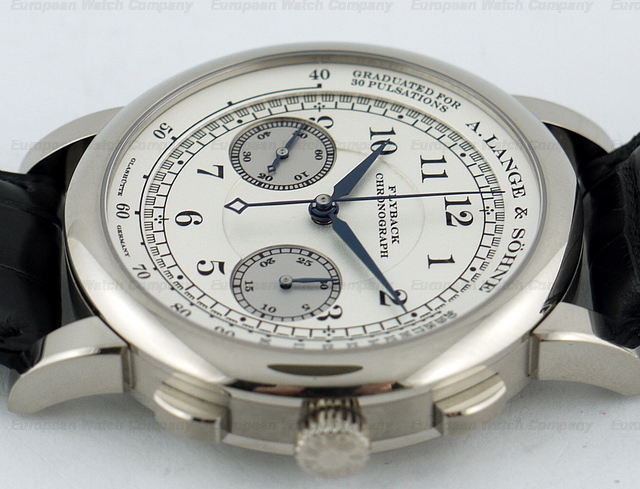
The 1815 chronograph is the simplest chronograph wristwatch Lange makes, and it is, essentially, the Datograph minus the big date complication and power reserve. The original version of the 1815 was introduced in 2004 when it generated quite a bit of attention in its own right, though not as much as the Datograph, of course – however, for those looking for a somewhat simpler but still very high quality chronograph from A. Lange & Söhne, the 1815 chrono fit the bill very nicely indeed.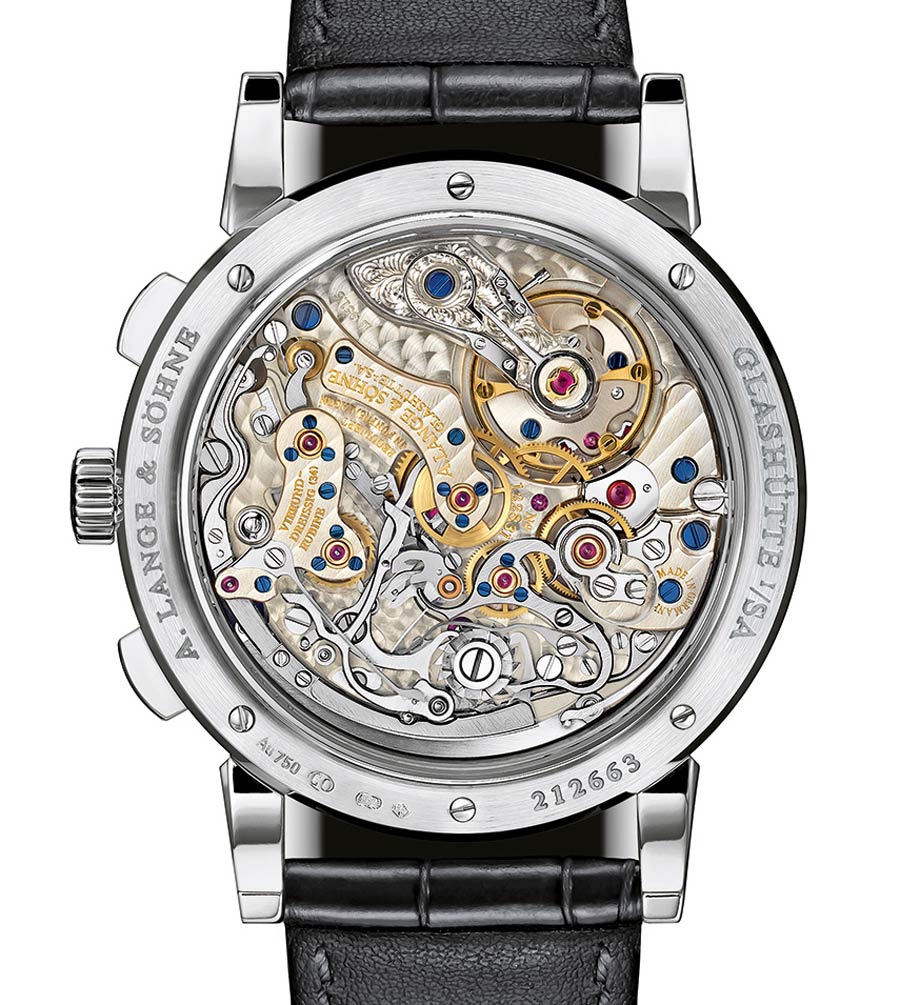
The original version came with a pulsometric scale, which is something of an old fashioned thing, though very popular exactly for its vintage, old-school charm . A pulsometric scale is used to measure heart rate when feeling a patient’s pulse – most are graduated for 30 pulsations; you start the chrono when you begin counting, stop after you reach 30 beats, and whatever number the second hand is pointing to is the patient’s heart rate.
The 1815 Chronograph is 39.5 mm in diameter, and it is actually slightly thinner than the Patek 5170, at 10.8 mm. The movement is the Lange caliber L951.5, and it’s 30.6 mm in diameter, and 6.1mm thick. Here we have a very pleasantly slim, really refined hand-wound flyback chronograph movement with all the wonderful visual impact of the Datograph but with a bit less bulk. I am really not sure why A. Lange & Söhne is sometimes thought of as a maker of bulky watches – now, it’s true that some of their watches, especially high complications, can be rather thick affairs but they’re hardly alone in that.
A. Lange & Söhne has, in the 1815 Chronograph, what is something of a bargain in today’s watch world.
